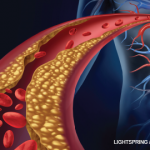“We also included a broader outcome—major adverse cardiovascular events—as a secondary composite outcome to provide greater power to detect differences among the three treatments,” write the authors in their discussion. “Fewer major adverse cardiovascular events occurred in the celecoxib group than in the ibuprofen group, but the difference did not reach significance in the intention-to-treat population (P=0.06). The rate of death from any cause was lower in the celecoxib group than in the naproxen group, although the difference did not reach significance (P=0.052).”
However, the rate of nonfatal myocardial infarction was higher in the ibuprofen group than in the naproxen group (hazard ratio, 1.39; 95% confidence interval, 1.01 to 1.91; P=0.04).
The investigators also found that the rate of hospitalization for hypertension was significantly lower in the celecoxib group than in the ibuprofen group (hazard ratio, 0.60; 95% confidence interval, 0.36 to 0.99, P=0.04). However, there was no significant difference between the rates of hospitalization for hypertension between the celecoxib group and the naproxen group.
“The results were consistent with much of the observational data and some of the prior trials, so the findings were not surprising,” explains Dr. Solomon. “But, they were very helpful for rheumatologists and their patients [because] we can now have greater confidence in the relative safety of different NSAIDs.”
The authors note that their study addresses only the relative safety of these three drugs and does not specifically address the safety of the many other NSAIDs on the market.
Lara C. Pullen, PhD, is a medical writer based in the Chicago area.
References
- Nissen SE, Yeomans ND, Solomon DH, et al. Cardiovascular safety of celecoxib, naproxen or ibuprofen for arthritis. N Engl J Med. 2016 Dec 29;375(26):2519–2529. doi: 10.1056/NEJMoa1611593. Epub 2016 Nov 13.
- U.S. Food and Drug Administration. Post-market drug safety information for patients and providers: Vioxx (rofecoxib) questions and answers. 2004 Sep 9.


